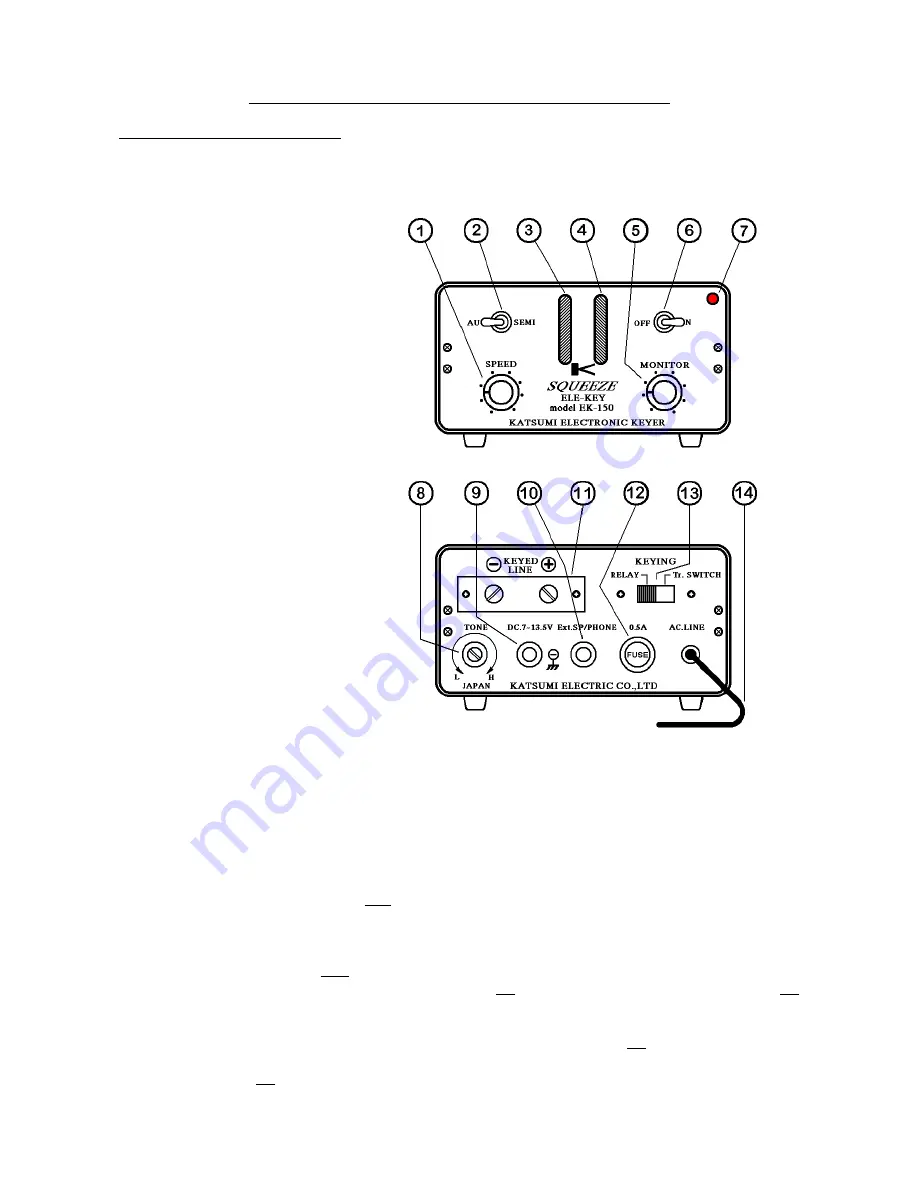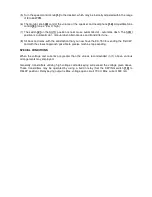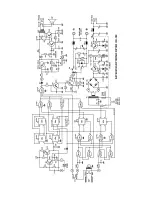
KATSUMI ELECTRONIC KEYER EK-150
INSTALLATION INSTRUCTION
FEATURES
The ELE-KEY model EK-150
itself forms the dots, dashes
and spaces in the precise ratio
required for perfect code, at any
speed desired by the operator.
Plug-in unit P.C.B. and solid
state circuitry.
Squeeze
(IAMBIC)
sending
with
full
dot
and
dash
memories.
Built-in sidetone with tone and
volume control, switch for
SEMI(BUG)/AUTO.
Built-in
speaker, headphone jack.
Heavy duty transistor switch
(2SB546) for 150 V, 2 Amp. DC
and with a built-in high speed
plate relay for max. 700 V, 500
mA any transmitter keying.
Operation on 100 to 120 V/50 –
60 Hz or DC 7 – 13.5 V.
Respectively
Operation on 220 to 240 V/50 –
60 Hz or DC 7 – 13.5 V.
OPERATION
(1) Check polarity and the required keying voltage and current on your transmitter key terminals,
using a tester (voltmeter, milliameter) the key up (open circuit) voltage must not be in excess of
.50 volts D.C.
(2) Connect the key line (output)
[11]
on the rear panel terminal (+) to the POSITIVE keying
terminal of the transmitter, and the (–) to the NEGATIVE terminal, as previously determined by
voltmeter test (1).
(3) Plug in the power cord
[14]
to the 100 to 120 volts resp. 220 to 240 volts, 50 to 60 Hz
alternating current supply. Set the power switch
[6]
to the ON position. The pilot lamp
[7]
should light.
(4) Moving the dual key levers to the dot position (push to the right for
[3]
left key lever) should
result in dots being heard from the speaker and moving the dual key lever to the dash position
(push to left for
[4]
right key lever) should produce dashes.
Summary of Contents for ele-key EK-150
Page 3: ......





















